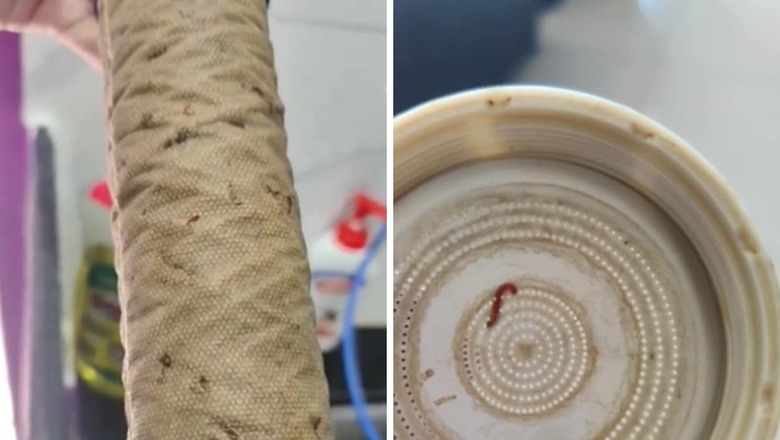
views
A resident of Pune’s Hinjawadi area recently discovered red larvae in the filter candle of his water purifier, sparking concerns over the water quality in the region. The incident occurred in the Blue Ridge township and was recorded. The video was shared on social media and this triggered a discussion among locals and internet users. The resident, who remains unnamed, shared the video with an ecologist named Jaideep Baphna, who then posted it on social media platform X on February 15.
In his post, Jaideep identified the larvae as Chironomid larvae, belonging to the Chironomidae family. These larvae are commonly known as non-biting midges in their adult stage and bloodworms in their larval stage. Expressing concern over the incident, Jaideep stated, “If these mosquito cousins have reached Wakad and Hinjawadi, it means the river is slowly losing its capacity to fight back.” He further mentioned that approximately 20% of the 800 flats in the township have reported the presence of these red-hued larvae, indicating potential issues with the water quality.
Jaideep’s post also highlighted other environmental issues that, according to him, needed immediate attention from the authorities. The post gained significant traction, with thousands of views and comments expressing concern over the situation.
Pune Drinking Water Alert Mula River – Mutha River Pollution Coming Soon to Your Neighborhood
See the following photo and video from a citizen of Blueridge township in Hinjawadi.
This is Chironomid larvae, a part of the Chironomidae family commonly called… pic.twitter.com/j4zTOcMzbn
— Jaideep Baphna, CFA (@jbaphna) February 14, 2024
Responding to the post, one user questioned the source of water supplied to Pune, stating that it is primarily sourced from dams and then filtered and pumped. They raised concerns about the possibility of downstream river water contaminating the supply and suggested checking the water tanks in buildings for any issues.
As far as I know, water supplied to Pune is sourced from dams. This then filtered and pumped.Where in this equation does downstream river water appear?Were the water tanks in the building checked?— jungleeMaharaj (@JangliMaharaj) February 15, 2024
Another user mentioned that residents of the Blueridge society, where the incident occurred, have reported illnesses and are resorting to buying bottled water (Biseri) due to concerns over the water quality. They highlighted the affordability issue, questioning how the broader population, especially those living in slums, could afford bottled water if the problem is widespread.
I know. Our friends from Blueridge society are telling us that they are indeed sick . They are buying Biseri. How would the 30% of Pune who live in slums afford Biseri if this was a broader problem?— Jaideep Baphna, CFA (@jbaphna) February 15, 2024
The Times of India recently interviewed Baphna regarding the Chironomid swarms that have been sighted and inquired whether this could indicate a broader presence of red bloodworms in other areas as well. According to Bhapna, it is suspected that these Chironomids might have laid eggs in the water sources of societies, which has led to their proliferation. When these larvae are red in colour, it is a sign of Chironomid breeding in highly polluted and stagnant waters.
Unfortunately, the degradation of riparian ecology along the Mula-Mutha stretches due to encroachments, concreting, asphalting work, and the use of pavers as part of the Riverfront Development project has significantly contributed to this problem, making such infestations worse. Bhapna further mentioned that the presence of predators in a thriving riparian zone tends to keep the population of such insects in control.




















Comments
0 comment